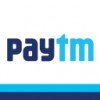Top 250 System Design Interview Questions and Answers
Updated 18 Jun 2025

Asked in Info Edge

Q. Describe how you would build a system for College Fest Management.
A system for managing college fests
Create a website for event registration and ticketing
Develop a mobile app for real-time updates and notifications
Implement a database to store event details and participant information
Integrate payment gateway for o...read more

Asked in Zepto

Q. Design the High-Level Design (HLD) for a rider management system.
Design HLD for rider management system
Use microservices architecture for scalability and flexibility
Implement user authentication and authorization for security
Include features like ride tracking, payment processing, and feedback system
Utilize databa...read more

Asked in Avalara Technologies

Use a data structure like a hash table to store contacts in a phone book.
Use a hash table to store contacts with keys as names and values as contact information
Each contact entry can be a structure containing fields like name, phone number, email, et...read more

Asked in Morgan Stanley

Design a system for users to subscribe to topics and receive notifications for new messages.
Create a user profile where they can select topics of interest to subscribe to.
Implement a messaging system that sends notifications to users when new message...read more

Asked in Walmart

Q. Design the High-Level Design (HLD) and Low-Level Design (LLD) of Zomato.
Design HLD and LLD of Zomato
High-Level Design (HLD) should include the overall architecture of the system, including components and their interactions
Low-Level Design (LLD) should include detailed design of each component, including data structures, ...read more

Asked in NatWest Group

Framework designs are the structure and organization of a software framework, including its components and interactions.
Framework designs define the overall architecture of a software system
They include the arrangement of components, their relationsh...read more

Asked in Dell EMC

Q. How would you design a distributed system?
Designing a distributed system involves breaking down a large application into smaller, interconnected components that can communicate with each other.
Identify the components and their responsibilities
Choose a communication protocol
Ensure fault toler...read more

Asked in Juspay Technologies

Q. Design a system for messaging multiple teams simultaneously.
Design a system for messaging multiple teams at a time.
Implement a messaging platform with channels for each team
Allow users to subscribe to multiple teams' channels
Provide options for real-time messaging and notifications
Include features like file s...read more

Asked in Partech

Q. Design YouTube as a microservice.
Design YouTube as microservice
Use microservices architecture to break down the functionalities of YouTube
Create separate services for video upload, video processing, video storage, user authentication, search, recommendation, etc.
Use message queues t...read more

Asked in Deliveroo

Q. Design a system where users can claim 6 million burgers in 10 minutes.
Design a system to allow users to claim 6M burgers in 10 minutes
Implement a scalable backend system to handle high volume of requests
Use load balancing to distribute requests evenly across servers
Set up a queue system to manage incoming requests and ...read more
System Design Jobs

Asked in Paytm

Design a bookmyshow system
Design a system to book and manage movie tickets
Consider features like seat selection, payment, and ticket cancellation
Include user authentication and authorization
Implement a database to store movie and theater information
C...read more

Asked in GoX

Q. How do you improve the QPS of a production system?
To improve QPS of a production system, optimize code, use caching, scale horizontally, and use load balancers.
Optimize code to reduce processing time
Use caching to reduce database queries
Scale horizontally by adding more servers
Use load balancers to ...read more

Asked in Oracle

Q. Describe the HLD design for a microservices-based problem.
HLD design for microservices involves breaking down a monolithic application into smaller, independent services.
Identify the business capabilities and break them down into microservices
Design the communication protocol between the microservices
Ensure...read more

Asked in ServiceNow

Q. Design a system for publishing newspapers using classes and functions, taking different aspects into account.
Design a system for putting newspapers using classes and functions
Create a Newspaper class with attributes like title, date, and content
Create a Publisher class with methods to publish and distribute newspapers
Create a Subscriber class with methods t...read more

Asked in Flipkart

Q. How is capacity planning done?
Capacity planning involves forecasting demand and allocating resources to meet that demand.
Forecasting demand based on historical data and market trends
Allocating resources such as labor, equipment, and inventory
Using tools such as ERP systems and si...read more

Asked in DP World

Q. Design a system that checks for inventory when a user clicks checkout on an E-commerce App.
Implement a system to check inventory when user clicks checkout on an Ecommerce App
Create a database to store inventory levels for each product
Implement a function that deducts the quantity of items in the cart from the available inventory
Display a m...read more

Asked in SquadStack

Designing a parking lot system involves layout planning, ticketing system, payment methods, security measures, and efficient traffic flow.
Layout planning to maximize space and accommodate different types of vehicles
Implementing a ticketing system for...read more

Asked in Meesho

Q. Design a cab booking system using object-oriented programming principles.
A cab booking system designed using OOP principles
Create classes for Cab, Customer, Driver, and Booking
Use inheritance and polymorphism to handle different types of cabs and bookings
Implement methods for booking a cab, assigning a driver, and calcula...read more

Asked in Biofourmis

Q. How did you scale the system?
We scaled the system by implementing horizontal scaling and load balancing.
Implemented horizontal scaling by adding more servers to the system
Implemented load balancing to distribute the workload evenly across servers
Used caching to reduce database l...read more

Asked in Kaiser Permanente

Q. How do you achieve high availability and zero downtime with any IDM system?
Achieving high availability and zero downtime with an IDM system involves redundancy, load balancing, disaster recovery planning, and continuous monitoring.
Implementing redundancy by having multiple servers for failover
Utilizing load balancing to dis...read more

Asked in PayU Payments

Design a URL shortener with database and necessary components
Use a unique identifier for each URL to generate short links
Store the original URL and corresponding short link in a database
Implement a redirect mechanism to redirect short links to origin...read more

Asked in BNY

The low-level design of an e-commerce website involves detailing the architecture, components, and interactions of the system.
Define the architecture including front-end, back-end, and database components
Detail the interactions between components suc...read more

Asked in WinZO

Q. Design a notification system which supports immediate, delayed, and repeated notifications.
Design a notification system supporting immediate, delayed, and repeated notifications
Use a queue to manage notifications with different delivery times
Include options for immediate, delayed, and repeated notifications
Allow users to set preferences fo...read more
Asked in Tower Research Capital LLC

Splitwise is a system for managing shared expenses among groups of people.
Classes: User, Expense, Group
Functions: addExpense(), settleUp(), calculateBalance()

Asked in PayPal

Rate limiter can be designed using token bucket algorithm to control the rate of requests.
Use token bucket algorithm to control the rate of requests
Set a limit on the number of requests allowed within a certain time frame
Track the number of requests ...read more

Asked in Flipkart

Design a cab booking system for efficient and convenient service.
Implement a user-friendly mobile app and website for booking cabs.
Include features like real-time tracking, fare estimation, and driver ratings.
Integrate payment options for seamless tr...read more

Asked in American Express

Q. How do you design a scalable system?
Designing a scalable system involves considering factors like load balancing, horizontal scaling, and fault tolerance.
Utilize load balancing to distribute traffic evenly across servers.
Implement horizontal scaling by adding more servers to handle inc...read more

Asked in Avontix

Q. Choose any one system of your choice and explain in detail.
I choose the respiratory system.
The respiratory system is responsible for breathing and gas exchange.
It includes the lungs, trachea, bronchi, and alveoli.
The process of respiration involves inhaling oxygen and exhaling carbon dioxide.
Common respirato...read more

Asked in ACKO

Designing an application like Instagram involves creating a platform for sharing photos and videos with social networking features.
Implement user profiles with the ability to upload, like, comment, and share photos/videos
Develop a news feed algorithm...read more

Asked in Bajaj Finserv

Designing an API to receive messages at a specified URL
Define the endpoint URL for receiving messages
Implement authentication and authorization mechanisms to ensure secure access
Use HTTP methods like POST for sending messages to the API
Include error ...read more
Interview Experiences of Popular Companies
Interview Questions of System Design Related Designations

Reviews
Interviews
Salaries
Users